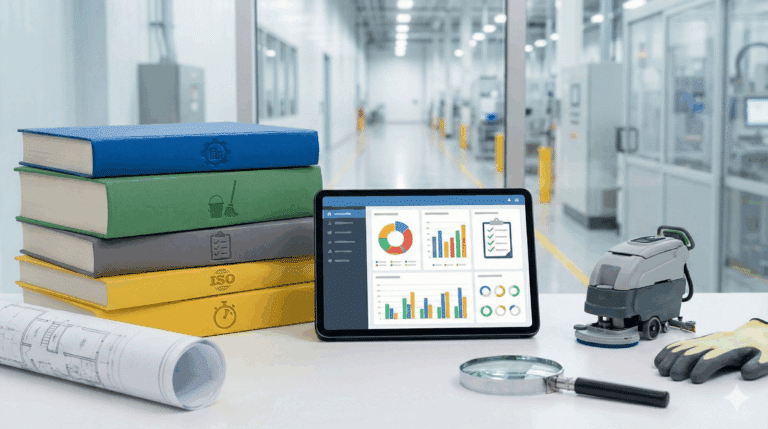Our societies have been transforming during this pandemic. We have been tested in a variety of ways every day while adapting ourselves to new working and learning routines. Much harder tests come from closing business or losing jobs. Many of us are trying to learn new skills to re-enter the workplace after the crisis and a large number of businesses are trying to reinvent themselves to stay afloat and survive.
Given their characteristics, SMEs are especially vulnerable to economic crisis, and yet, they represent a key pillar for the local economy. It is essential that small businesses across the globe weather the pandemic because they are vital to every nation’s economy. Their survival or downfall can affect us all in these uncertain times.
The current crisis is accelerating digital transformation, but also has the potential to accelerate the digital divide. At present, there are many technology-oriented solutions that can help your businesses to overcome this crisis. Digital technologies can be essential not just survive, but to thrive even during challenging times.
Are digital solutions the answer to business continuity?
At present, any business focused on providing exchange of goods and ideas between people without in-person interaction will thrive. An example of these companies are Cisco, which provide physical infrastructure for networking. Other company that is blooming is Zoom that provide video conferencing services. Online retailers are also having a great time. Amazon, has seen a 44% increase in stock price since a low on March 12, and it is currently hiring an additional 175,000 employees to work in distribution centers. You can say they are big and well-positioned businesses, but many big manufacturers are struggling to survive. On the other hand, some small local companies are flourishing. For example, some local restaurants have reinvented themselves and are focusing on delivery. Common characteristics among businesses that are experiencing success during these challenging times are the ability to adapt themselves to the new customers’ requirements and a willingness to embrace technology in order to improve production and services.
To overcome this crisis, companies need to be receptive and responsive. There are many technologies that can help them not just to carry out their normal activities, but also enhance business processes. Here we have few examples about how technology can help businesses to go through this pandemic in a successful fashion.
Digitalization
In the wake of the COVID-19 pandemic, going digital is not a just an indulgence anymore; it is a vital necessity. The first step to go digital is having your company website where prospective clients can check and order your products and services. Then, you can start promoting your business in search engines and social media platforms.
Nevertheless, digital transformation is not just about having digital presence; it is the integration of digital technology into all areas of a business. The dictionary states that digital transformation involved all the changes associated with the application of digital technology in the different aspects of human society. When it comes to business, it will involve changes to the way you operate and deliver value to your customers. It is not just a cosmetic change; it is a cultural change that requires organizations to continually challenge the status quo, experiment, and do not be scare of failure. At present, you can find a wide range of digital solutions that can support and accelerate your business development.
Implement digital applications
Many companies and services have continued to remain open during COVID-19 by adopting new physical distancing rules and technology to keep their business running and their employees safe. During the pandemic, we have seen an increase in the usage of online services such as digital signature or digital IDs not just to buy products and services; also to connect with social organizations, hospitals and to apply to social benefits. The capacity to provide personalized and digital services has become essential. Before COVID-19, these types of digital applications were nice to have; now they are necessary. For many organizations, these apps can help them providing a good quality service whilst reducing in-branch visits.
Technology to adapt to the lockdown
For factories and businesses, lockdown situations are very challenging and can result in heavy losses. Factories that digitize across their supply chains are better prepared to deal with crisis and unexpected events, like the coronavirus pandemic. With most people required to stay indoors, automated guided vehicles and drones can help moving items around a factory floor. Fitting sensors to track their entire supply chain can enable factories to plan production targets . Other technological developments such as augmented reality (AR) can help to reduce the number of workers required inside a factory.
Effective remote work monitoring
Companies across the globe have shifted to a work-from-home model due to the coronavirus outbreak. As a consequence of that, employers need to find the right tools to monitor their workers’ progress. Many of these tools have been designed to provide employers insights about production processes and accomplished tasks. For many employers, time tracking is critical to figure out how productive employees are when working remotely whist other prefer to focus on productivity. Nevertheless, data should be available to both manager and employee in order to get optimal results. With the right technology and software in place, businesses can maximize their employee’s ability to work remotely.
Information and communications technology (ICT)
Technology has been continually improving means of communication. During the pandemic, technology helps people to communicate virtually, regardless of location—making it essential for businesses that need to remain working. Having the proper technology implemented within your organization promotes the flexibility of virtual communication when social distancing is compulsory by government officials.
Improved relationships between all actors involved
Do you need to conclude a distance contract or communicate with other offices without physical presence? Digital solutions such as electronic contracts can improve relationships between clients, suppliers, workers and among all the actors in the different economic sectors. In addition to being able to remotely carry out any of the aforementioned processes and solve the hiring needs in the best way with the most advanced technology worldwide, no matter the sector in question, this tool will lower operating costs in contracting since you do not have to move between different cities or countries. You will also reduce wasted time that and dedicate more hours to other urgent and demanding tasks.
Hyperconnectivity
This term was created by social scientists and refers to the use of multiple means of communication, such as email, instant messaging, telephone, face-to-face contact and a wide range of information and communication services. If we apply this concept to business, we could say that is the total connection between all the areas involved such as employees, customers, suppliers (and anyone who participates in some form of relationship with them)in order to achieve, in the virtual world, the communication and coordination that they had in the physical world. Hyperconnectivity facilitates information availability on any device, which can be easily shared among team members, partners, suppliers and customers. Hyperconnectivity helps organizations to become more agile because new team members have instant access to the platform with no requirement for IT skills.
Improved workflow efficiency
Learning to streamline processes is necessary to improve overall business performance. Technology now offers workflow software that enables businesses to restructure their repetitive paper-based ways of working, like work order processing or accounts payable procedures among others. These tools provides you with the ability to maintain normal operations in less than normal conditions. With data backups and recovery systems, you can continue work even if the worst happens.
Enhanced productivity
Technology can also help us to improve productivity by eliminating time-consuming tasks. Document management software removes the need for data entry, filing and manual file retrieval. There are a plethora of technology and software options out there to improve workflow. For example, time tracking software allows employees to keep track of their hours, mileage, and expenses, all in one place. These tracking solutions keep critical information in one place, which helps managers, employees, and clients remain compliant, well-informed, and productive.
Improved data management
The volume of data we create is always expanding. Every time a consumer conduct a search, complete a purchase, visit our website or comment on our post, we add to that vast ocean of information. As we all know, this information can be a valuable asset, but only if we know how to tap into and extract the bits that are relevant for our use. In the last years, the volume of data has increased far faster than most companies’ ability to process it. Technology can help us to keep our information organized and indexed. Today there many apps out there to help you to organize and process relevant data, which can help us to make informed decisions from further analysis, study, and research. Without data collection and analysis, companies would stumble around in the dark using outdated methods to make their decisions.
There are millions of small companies facing the contingency of the COVID-19 that is threatens its continuity. These are very challenging times; however, there are some tools available that can help you minimize the impact on your business. Many of those technologies already exist, you just have to learn using them effectively and take advantage of their benefits.






